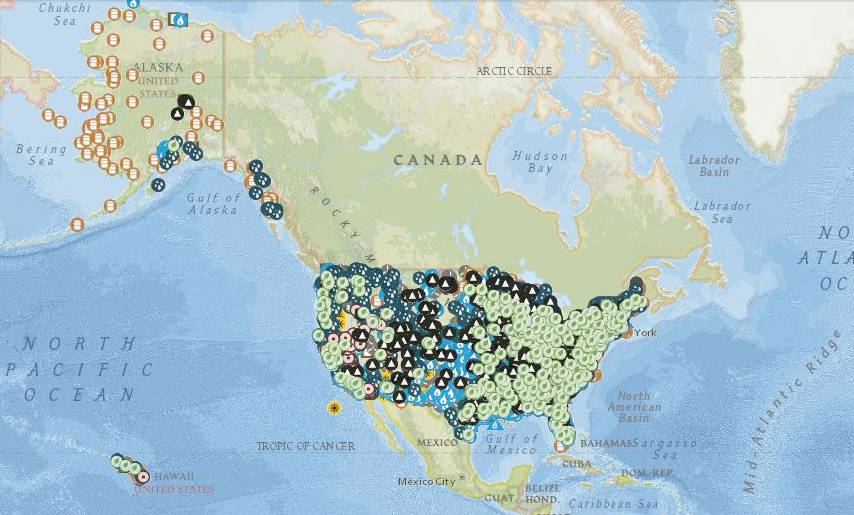You are here
U.S. Energy Mapping System
Fri, 2014-02-14 17:00 — Kathy Gilbeaux(CLICK ON THE MAP IMAGE BELOW)
U.S. Energy Information Administration - eia.gov
The U.S. Energy Information Administration (EIA) collects, analyzes, and disseminates independent and impartial energy information to promote sound policymaking, efficient markets, and public understanding of energy and its interaction with the economy and the environment.
Mission and Overview
The U.S. Energy Information Administration (EIA) is the statistical and analytical agency within the U.S. Department of Energy. EIA collects, analyzes, and disseminates independent and impartial energy information to promote sound policymaking, efficient markets, and public understanding of energy and its interaction with the economy and the environment. EIA is the nation's premier source of energy information and, by law, its data, analyses, and forecasts are independent of approval by any other officer or employee of the U.S. Government.
EIA conducts a comprehensive data collection program that covers the full spectrum of energy sources, end uses, and energy flows. EIA also prepares informative energy analyses, monthly short-term forecasts of energy market trends, and long-term U.S. and international energy outlooks. EIA disseminates its data, analyses, and other products primarily through its website and customer contact center.
The Department of Energy Organization Act of 1977 established EIA as the primary federal government authority on energy statistics and analysis, building upon systems and organizations first established in 1974 following the oil market disruption of 1973. Located in Washington, DC, EIA is an organization of about 370 federal employees, with an annual budget in Fiscal Year 2013 of $99.5 million.


Recent Comments